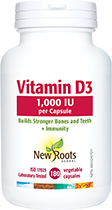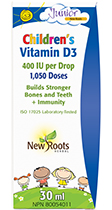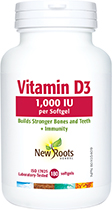Infections and Health
Our family has not been sick since the spring. With two young kids, one starting preschool and the other in kindergarten, we would usually expect quite a few colds to roll through the household, especially at this time of the year. The statistics show that young children can get as many as eight to ten colds each year.[1]
On the one hand, this is great news: Not having had a cold or flu for this long certainly does not feel like it should be a problem. It also shows that, as difficult as it might be, social distancing is slowing the spread of viruses and infections.
According to the “hygiene hypothesis,” the increasing incidence of autoimmune diseases and allergies in the developed world may be linked to a decreasing incidence of infections.[2] Studies show that attendance at a daycare for the first six months of life significantly reduces the risks of developing eczema or asthma.[3] Animal models also support the idea that lower infectious burdens lead to a higher incidence of autoimmune disease.[4][5] Basically, the infectious agents that evolved with us protect us from a spectrum of immune-related disorders.
Normal exposure to microbes, especially in children, is needed for the normal development of our immune system. According to some researchers, this may explain the rising incidence of asthma in the last decade in the developed world.[6] The incidence of eczema has also dramatically increased in industrialized countries over the last 30 years and now affects 15–30% of children and 2–10% of adults.[7] Similarly, autoimmune diseases are on the rise, with increases seen in inflammatory bowel disease, type 1 diabetes, and multiple sclerosis.[8][9][10] While causation cannot be elucidated, there is a strong correlation.
 There are currently more than one billion people worldwide with an allergic disease, and the problem is expected to affect four billion by 2050.[11] Asthma is a significant factor in this epidemic, with 300 million affected patients of all ages.[12] Animal studies show that infection with respiratory viruses leads to protection from asthma.[13]
There are currently more than one billion people worldwide with an allergic disease, and the problem is expected to affect four billion by 2050.[11] Asthma is a significant factor in this epidemic, with 300 million affected patients of all ages.[12] Animal studies show that infection with respiratory viruses leads to protection from asthma.[13]
Of course, no one is suggesting that you should try to get sick more often. The idea is not to avoid getting sick, but getting sick less often and with less drastic effects, encouraging the immune system to function better and prevent allergic and autoimmune disease. Research studies looking at the influence of infections on our immune system function points to a relationship on the effects of beneficial bacteria and the microbiome—all the microbes that live on or in the human body—in regulating its function.[14]
Probiotics, containing healthy live bacteria, have been shown to be particularly helpful when it comes to maintaining a normal immune response. A review showed that children taking probiotic supplements are less likely to develop respiratory tract infections.[15] When scientists reviewed 23 research trials involving more than 6,000 children, they found that probiotics significantly decreased the risk of having at least one respiratory tract infection. Children supplementing with probiotics were also less likely to be absent from daycare or school.
Not only are probiotics effective at disease prevention, but research also demonstrates that probiotics improve symptoms of autoimmune disease. Trials have shown that modification of the bacteria in our gut with probiotics improves gastrointestinal symptoms and inflammation in rheumatoid arthritis, ulcerative colitis, lupus, and multiple sclerosis.[16][17]
Another natural supplement with benefits when it comes to balancing the immune system is vitamin D. Our main source of this vitamin remains the sun. Studies show that sun avoidance is a risk factor for some major causes of death and is linked to higher rates of some cancers as well as heart disease, both of which have some involvement with some function of the immune system.[18] We now spend most our time inside, which has led to low levels of vitamin D in the general population. The prevalence of vitamin D deficiency has therefore increased significantly. The Canadian Health Measures Survey, done between August 2009 and November 2011, showed that about 32% of Canadians were deficient in vitamin D3, with less than 50 nmol/L of 25(OH)D3, a marker of vitamin D3, in the blood.[19]
 Vitamin D deficiency is prevalent in several autoimmune diseases such as multiple sclerosis, type 1 diabetes, and lupus.[20] Multiple studies show that vitamin D receptors are found on several immune cells and that vitamin D has effects on the immune system.[21][22] It regulates the growth and differentiation of multiple cell types, and it helps to regulate the immune response.[23] The vitamin reduces the production of immune cells involved in inflammation and plays an important role in the prevention of autoimmune disorders.[24][25][26] There is mounting evidence demonstrating that vitamin D deficiency increases the risk of upper respiratory tract infections and influenza.[27] One study in school children demonstrated that receiving 2,000 IU of vitamin D per day reduces the risk of contracting the flu from 18.6% to 10.8%.[28] It is not surprising that some experts are asking for immediate action when it comes to protecting the population from vitamin D deficiency.[29]
Vitamin D deficiency is prevalent in several autoimmune diseases such as multiple sclerosis, type 1 diabetes, and lupus.[20] Multiple studies show that vitamin D receptors are found on several immune cells and that vitamin D has effects on the immune system.[21][22] It regulates the growth and differentiation of multiple cell types, and it helps to regulate the immune response.[23] The vitamin reduces the production of immune cells involved in inflammation and plays an important role in the prevention of autoimmune disorders.[24][25][26] There is mounting evidence demonstrating that vitamin D deficiency increases the risk of upper respiratory tract infections and influenza.[27] One study in school children demonstrated that receiving 2,000 IU of vitamin D per day reduces the risk of contracting the flu from 18.6% to 10.8%.[28] It is not surprising that some experts are asking for immediate action when it comes to protecting the population from vitamin D deficiency.[29]
To minimize the risk of complications following infections, as well as developing chronic diseases, it is clearly in our interest to maintain an effective immune response. The hygiene hypothesis and science show that experiencing minor infections helps to prevent allergies and autoimmune diseases. In addition, measures such as supplementation with probiotics and vitamin D have been shown to protect health and balance the immune system.
To support our immunity, we also need to focus on some of the key determinants of health. Staying active, maintaining a healthy weight, not smoking, and eating more vegetables are all lifestyle factors that have been shown to improve health and reduce the risk of negative health outcomes after contracting an infection.[30][31][32]
 Dr. Ludovic Brunel, ND
Dr. Ludovic Brunel, ND
Dr. Brunel has 15+ years of experience as a Naturopathic Doctor and practices in Calgary. His approach has always been to improve health outcomes by relying on the best research available.
elevatedhealthcare.ca
References
- [No authors listed]. “Common infections and your child.” Caring for Kids · https://www.caringforkids.cps.ca/handouts/health-conditions-and-treatments/common_infections_and_your_child · Updated 2018-08.
- Okada, H., C. Kuhn, H. Feillet, and J.-F. Bach. “The hygiene hypothesis for autoimmune and allergic diseases: An update.” Clinical and Experimental Immunology, Vol. 160, No. 1 (2010): 1–9.
- Ball, T.M., J.A. Castro-Rodriguez, K.A. Griffith, C.J. Holberg, F.D. Martinez, and A.L. Wright. “Siblings, day-care attendance, and the risk of asthma and wheezing during childhood.” The New England Journal of Medicine, Vol. 343, No. 8 (2000): 538–543.
- Bach, J.F. “The effect of infections on susceptibility to autoimmune and allergic diseases.” The New England Journal of Medicine, Vol. 347, No. 12 (2002): 911–920.
- Like, A.A., D.L. Guberski, and L. Butler. “Influence of environmental viral agents on frequency and tempo of diabetes mellitus in BB/Wor rats.” Diabetes, Vol. 40, No. 2 (1991): 259–262.
- Eder, W., M.J. Ege, and E. von Mutius. “The asthma epidemic.” The New England Journal of Medicine, Vol. 355, No. 21 (2006): 2226–2235.
- Bieber, T. “Atopic dermatitis.” The New England Journal of Medicine, Vol. 358, No. 14 (2008): 1483–1494.
- Bach, J.F. “The effect of infections on susceptibility to autoimmune and allergic diseases.” The New England Journal of Medicine, Vol. 347, No. 12 (2002): 911–920.
- Gale, E.A.M. “The rise of childhood type 1 diabetes in the 20th century.” Diabetes, Vol. 51, No. 12 (2002): 3353–3361.
- Mayr, W.T., S.J. Pittock, R.L. McClelland, N.W. Jorgensen, J.H. Noseworthy, and M. Rodriguez. “Incidence and prevalence of multiple sclerosis in Olmsted County, Minnesota, 1985–2000.” Neurology, Vol. 61, No. 10 (2003): 1373–1377.
- Lötvall, J., R. Pawankar, D.V. Wallace, C.A. Akdis, L.J. Rosenwasser, R.W. Weber, A.W. Burks, et al. “We call for iCAALL: International Collaboration in Asthma, Allergy and Immunology.” The World Allergy Organization Journal, Vol. 5, No. 3 (2012): 39–40.
- Strachan. D.P. “Hay fever, hygiene, and household size.” BMJ, Vol. 299, No. 6710 (1989): 1259–1260.
- Skevaki, C., C. Hudemann, M. Matrosovich, C. Möbs, S. Paul, A. Wachtendorf, B.A. Alhamwe, et al. “Influenza-derived peptides cross-react with allergens and provide asthma protection.” The Journal of Allergy and Clinical Immunology, Vol. 142, No. 3 (2018): 804–814.
- Conrad, M.L., R. Ferstl, R. Teich, S. Brand, N. Blümer, A.O. Yildirim, C.C. Patrascan, et al. “Maternal TLR signaling is required for prenatal asthma protection by the nonpathogenic microbe Acinetobacter lwoffii F78.” Journal of Experimental Medicine, Vol. 206, No. 13 (2009): 2869–2877.
- Wang, Y., X. Li, T. Ge, Y. Xiao, Y. Liao, Y. Cui, Y. Zhang, et al. “Probiotics for prevention and treatment of respiratory tract infections in children: A systematic review and meta-analysis of randomized controlled trials.” Medicine, Vol. 95, No. 31 (2016): e4509.
- Liu, Y., J.J. Alookaran, and J.M. Rhoads. “Probiotics in autoimmune and inflammatory disorders.” Nutrients, Vol. 10, No. 10 (2018): 1537.
- De Luca, F., and Y. Shoenfeld. “The microbiome in autoimmune diseases.” Clinical and Experimental Immunology, Vol. 195, No. 1 (2019): 74–85.
- Lindqvist, P.G., E. Epstein, K. Nielsen, M. Landin-Olsson, C. Ingvar, and H. Olsson. “Avoidance of sun exposure as a risk factor for major causes of death: A competing risk analysis of the Melanoma in Southern Sweden cohort.” Journal of Internal Medicine, Vol. 280, No. 4 (2016): 375–387.
- Janz, T., and C. Pearson. “Vitamin D blood levels of Canadians.” Health at a Glance, Statistics Canada · https://www150.statcan.gc.ca/n1/pub/82-624-x/2013001/article/11727-eng.htm · Modified 2015-11-27.
- Yang, C.-Y., P.S.C. Leung, I.E. Adamopoulos, and M.E. Gershwin. “The implication of vitamin D and autoimmunity: A comprehensive review.” Clinical Reviews in Allergy & Immunology, Vol. 45, No. 2 (2013): 217–226.
- Provvedini, D.M., C.D. Tsoukas, L.J. Deftos, and S.C. Manolagas. “1,25-dihydroxyvitamin D3 receptors in human leukocytes.” Science, Vol. 221, No. 4616 (1983): 1181–1183.
- Veldman, C.M., M.T. Cantorna, and H.F. DeLuca. “Expression of 1,25-dihydroxyvitamin D3 receptor in the immune system.” Archives of Biochemistry and Biophysics, Vol. 374, No. 2 (2000): 334–338.
- Adorini, L., and G. Penna. “Control of autoimmune diseases by the vitamin D endocrine system.” Nature Clinical Practice. Rheumatology, Vol. 4, No. 8 (2008): 404–412.
- Alroy, I., T.L. Towers, and L.P Freedman. “Transcriptional repression of the interleukin-2 gene by vitamin D3: Direct inhibition of NFATp/AP-1 complex formation by a nuclear hormone receptor.” Molecular and Cellular Biology, Vol. 15, No. 10 (1995): 5789–5799.
- Lemire, J.M., D.C. Archer, L. Beck, and H.L. Spiegelberg. “Immunosuppressive actions of 1,25-dihydroxyvitamin D3: Preferential inhibition of Th1 functions.” The Journal of Nutrition, Vol. 125, No. 6 Suppl. (1995): 1704S–1708S.
- Cippitelli, M., and A. Santoni. “Vitamin D3: A transcriptional modulator of the interferon-γ gene.” European Journal of Immunology, Vol. 28, No. 10 (1998): 3017–3030.
- Beard, J.A., A. Bearden, and R. Striker. “Vitamin D and the anti-viral state.” Journal of Clinical Virology, Vol. 50, No. 3 (2011): 194–200.
- Urashima, M., T. Segawa, M. Okazaki, M. Kurihara, Y. Wada, and H. Ida. “Randomized trial of vitamin D supplementation to prevent seasonal influenza A in schoolchildren.” The American Journal of Clinical Nutrition, Vol. 91, No. 5 (2010): 1255–1260.
- Papadimitriou, D.T. “The big vitamin D mistake.” Journal of Preventive Medicine and Public Health, Vol. 50, No. 4 (2017): 278–281.
- Martin, S.A., B.D. Pence, and J.A. Woods. “Exercise and respiratory tract viral infections.” Exercise and Sport Sciences Reviews, Vol. 37, No. 4 (2009): 157–164.
- Baskaran, V., R.L. Murray, A. Hunter, W.S. Lim, and T.M. McKeever. “Effect of tobacco smoking on the risk of developing community acquired pneumonia: A systematic review and meta-analysis.” PLoS One, Vol. 14, No. 7 (2019): e0220204.
- Ritter, A., N.-N. Kreis, F. Louwen, and J. Yuan “Obesity and COVID-19: Molecular mechanisms linking both pandemics.” International Journal of Molecular Sciences, Vol. 21, No. 16 (2020): 5793.

 Stores
Stores



